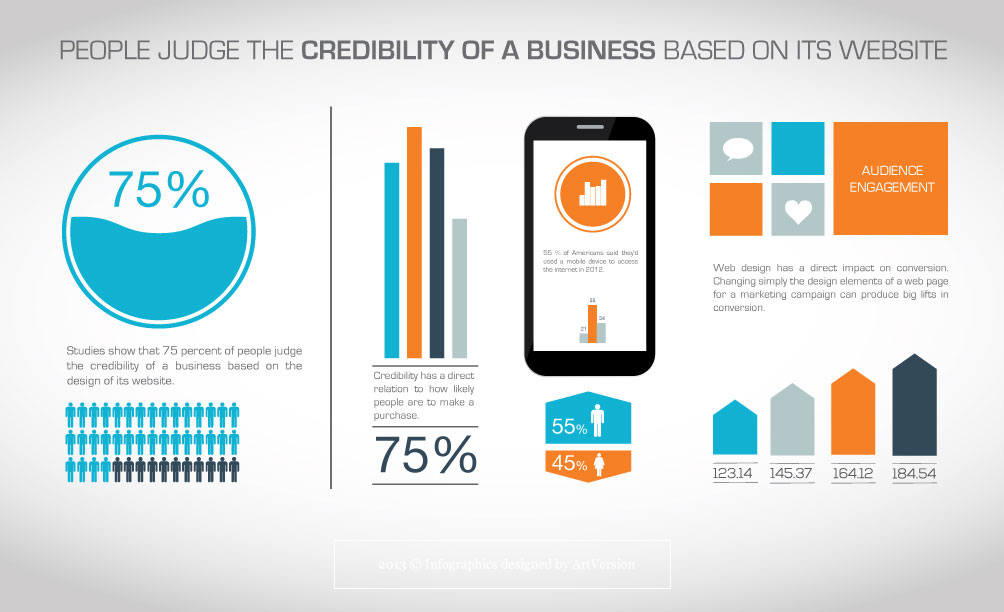Crafting A User-Friendly Site: Strategies And Techniques For Efficient Web Design
Crafting A User-Friendly Site: Strategies And Techniques For Efficient Web Design
Blog Article
Content By-Gates Brandt
Master the art of web design by concentrating on customer experience. Craft user-friendly navigating and choose mobile optimization to boost the browsing experience. Make sure very easy navigating with clear headings and appealing visuals. Focus on mobile responsiveness for a constant user experience. By integrating these essential design concepts, you can develop an easy to use site that mesmerizes visitors.
Important Style Principles
When making a web site, prioritize user experience most importantly else. Your major objective ought to be to produce a smooth and pleasurable experience for your site visitors. Start by guaranteeing that your site is easy to navigate. Use clear headings, arranged menus, and user-friendly buttons to direct users through your web content easily. Keep in mind, simplicity is vital. Avoid jumbling your pages with unneeded elements that can bewilder or puzzle your target market.
An additional important design principle is to make certain your web site is aesthetically enticing. Pick a natural color design, top notch photos, and legible fonts to improve the general look of your site. Uniformity is essential in establishing a strong brand identification and making your web site more unforgettable to customers.
Additionally, prioritize mobile responsiveness. With more individuals surfing the net on their mobile phones and tablet computers, it's necessary that your internet site looks and works well on all devices. Test your site on different screen sizes to ensure a seamless experience for all users. By focusing on these crucial design concepts, you can create an easy to use site that maintains visitors returning for even more.
User-Focused Navigating
To enhance user interaction and enhance their surfing experience, prioritize creating intuitive navigating paths that lead visitors perfectly via your internet site. Clear and well-organized navigating is https://www.who.int/publications-detail-redirect/9789240046085 for assisting individuals locate the info they need promptly and successfully. Beginning by keeping your menu framework basic and easy to understand. Usage detailed labels that clearly show what web content can be located under each menu option. Additionally, consider applying dropdown food selections for subcategories to prevent overcrowding the main navigation bar.
One more crucial aspect of user-focused navigating is making use of breadcrumbs. Breadcrumbs are a second navigation help that reveals individuals their current location on the site and allows them to easily navigate back to previous pages. This feature is especially helpful for users who enter your website through a deep link or an online search engine result.
Furthermore, incorporating search functionality prominently on your web site can even more enhance customer navigation. A search bar allows individuals to promptly discover specific web content without having to click via numerous web pages. Ensure that your search bar is easily visible and available on every page of your site for maximum usability. By prioritizing user-focused navigating strategies, you can develop an extra user-friendly and enjoyable browsing experience for your visitors.
Mobile Optimization Techniques
Think about maximizing your web site for mobile phones to ensure a smooth individual experience throughout different display sizes. Mobile optimization is essential in today's digital landscape where a significant portion of net surfing happens on smart devices and tablet computers.
To boost mobile usability, start by implementing responsive design techniques. This technique allows your website to adjust to numerous screen measurements, keeping performance and looks.
Focus on optimizing loading times for mobile individuals. Slow-loading sites can hinder site visitors and influence your internet search engine rankings. Compress images, reduce HTTP requests, and utilize browser caching to enhance packing speed. In addition, focus on web content hierarchy for mobile screens. Guarantee that crucial details is plainly displayed, and navigating is intuitive, promoting simple accessibility to vital sections.
Utilize touch-friendly components such as bigger switches and streamlined types to assist in interaction on mobile phones. Conduct thorough screening throughout different mobile systems to recognize and remedy any type of functionality issues.
Conclusion
Finally, understanding the art of website design is essential for developing an user-friendly website. By incorporating crucial style principles, user-focused navigating, and mobile optimization methods, you can ensure a seamless and pleasurable experience for your visitors.
For example, a local pastry shop saw a 30% boost in online orders after overhauling their internet site to be more easy to use and mobile-responsive. Keep in mind, a well-designed web site can make all the difference in attracting and retaining clients.
